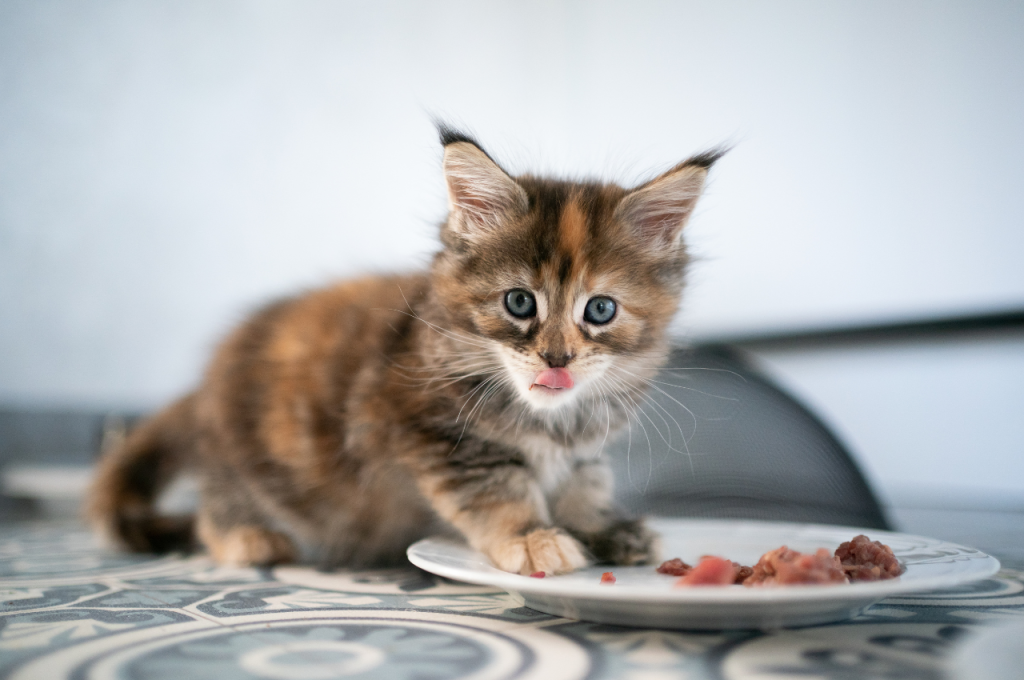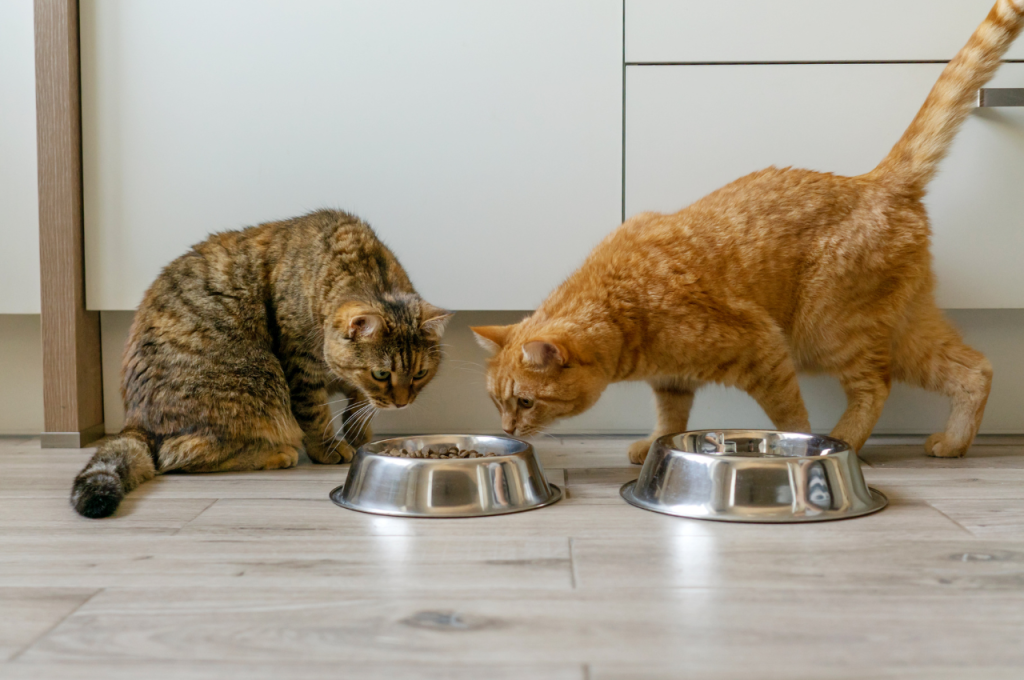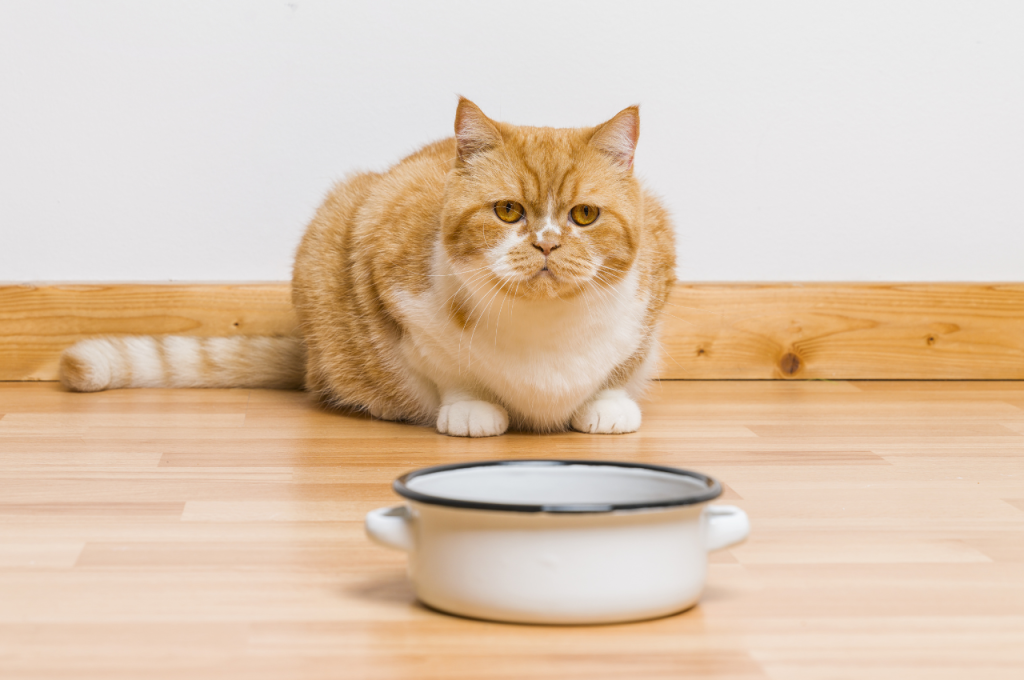Cats’ favorite food is a meat-based diet, high in protein and low in carbohydrates. In addition to being obligate carnivores, cats have taste receptors that are highly sensitive to meat flavors.
Cats’ love for meat is deeply ingrained due to their evolutionary history as predators. This preference stems from their biological need for certain nutrients found predominantly in animal tissues. Protein, for instance, is vital for maintaining lean muscle mass and supporting various bodily functions.
Not only does a meat-based diet provide cats with the necessary nutrients, but it also satisfies their taste cravings. The strong aroma and savory taste of meat entice their senses, making it their preferred food choice. Whether it’s fresh meat, wet cat food, or high-quality dry kibble, cats thrive on a meat-centric diet that caters to their carnivorous nature.
Exploring Cat’s Palate
Cats have always been fascinating creatures, with their mysterious ways and captivating personalities. As cat owners, it is our responsibility to ensure our feline friends receive the best possible care, especially when it comes to their diet. Understanding a cat’s favorite food requires delving into their palate, examining their carnivorous nature and unique taste preferences. In this article, we will explore what makes cats’ favorite food so irresistible to them.

Carnivorous Nature
Cats are natural-born carnivores, meaning their bodies have evolved to thrive on a diet predominantly made up of animal proteins. This carnivorous nature stems from their ancestors, who were hunters in the wild. The feline digestive system is designed to efficiently process and absorb nutrients from animal-derived ingredients, including meat, organs, and bones.
Feeding cats with a balanced, protein-rich diet is crucial for their overall health and well-being. It provides essential amino acids, vitamins, and minerals that contribute to their growth, muscle development, and immune function. Being aware of this carnivorous nature is essential when considering a cat’s favorite food.
Unique Taste Preferences
While cats have a carnivorous nature, their taste preferences can be unique compared to other carnivorous animals. Have you ever noticed how finicky your cat can be with their food choices? This fussiness stems from their keen sense of taste, which detects even the subtlest differences in flavor, texture, and aroma.
Cats are particularly sensitive to the amino acid called taurine, which is only found in animal tissues. This amino acid is essential for their heart health, vision, and overall vitality, making it a crucial component in their favorite foods. Additionally, cats have fewer taste receptors for sweetness, explaining their limited attraction to foods that are high in carbohydrates.
Although cats have strong preferences for certain flavors, their tastes may vary from one individual to another. Some cats may prefer fish-based flavors, while others may be more inclined toward poultry or game flavorings. Understanding your cat’s unique taste preferences is key to providing them with a diet that they will truly enjoy.
| Key Points |
| Cats have a carnivorous nature and require a diet rich in animal proteins. |
| Their taste preferences are driven by their keen sense of taste. |
| Cats are sensitive to the amino acid taurine, found only in animal tissues. |
| Their taste choices may vary, with some cats preferring fish, poultry, or game flavors. |
Providing your cat with a variety of options that align with their instincts and taste preferences is crucial in keeping them satisfied and healthy. So, delve into the world of feline gastronomy by understanding their carnivorous nature and embracing their unique taste preferences.
Top Picks for Cat’s Favorite Food
When it comes to cats, choosing the right food is essential for their health and happiness. As a cat owner, finding your feline friend’s favorite food can be a real challenge. To make the task easier for you, we’ve compiled a list of top picks for a cat’s favorite food. From a meat-based diet to fish delights and dairy treats, we’ll explore the options that are sure to make your cat purr with delight.
Meat-based Diet
Did you know that cats are obligate carnivores? This means that their bodies are designed to thrive on a diet primarily consisting of meat. When choosing a cat food, opt for products that are rich in high-quality animal protein. Look for ingredients like chicken, turkey, beef, or lamb as the main source of protein. Avoid products that contain fillers or artificial additives that may compromise the nutritional value of the food.
Fish Delights
Many cats have an inherent love for fish. Feeding your feline buddy with fish-based cat food can be a great way to treat them. Fish is an excellent source of protein and omega-3 fatty acids, which can help in maintaining healthy skin and a shiny coat for your cat. However, it’s important to note that some cats may have sensitivities to fish or be prone to urinary issues, so it’s best to consult with your veterinarian before making fish the main component of their diet.
Dairy Treats
Although cats are lactose intolerant and cannot digest milk properly, some dairy products can still be a delicious treat for them. Offer your cat small amounts of lactose-free dairy products like plain yogurt or cottage cheese as an occasional treat. These dairy treats can provide your cat with a good source of protein and some beneficial bacteria that can aid in digestion. Just be cautious not to overdo it, as excessive consumption of dairy can lead to digestive issues in cats.
Understanding Cat’s Nutritional Needs
Cats have specific nutritional needs, making it essential to understand their favorite foods. High-quality protein, fat, and essential nutrients are vital for their health. When choosing cat food, lean towards options with real meat, limited carbohydrates, and no artificial additives.
Meeting their dietary requirements ensures a happy and healthy feline friend.
Cat’s nutritional needs are crucial for their health and well-being. To ensure our furry friends thrive, it’s essential to understand what constitutes a balanced diet for them.
Protein Requirement
Cats require high-quality protein in their diet for optimal growth and muscle maintenance. Include protein sources like meat, fish, and poultry in their meals.
Essential Nutrients
Cats need a balanced mix of vitamins, minerals, and amino acids for overall health. Ensure their diet includes taurine, vitamin A, vitamin E, and calcium.
Healthy Options for Feline Friends
Discover the top healthy options for feline friends to provide them with the best nourishment. Cats love high protein, meat-based foods, lean meats, and fish to satisfy their cravings. Keep your cat happy and healthy by incorporating their favorite foods into their diet.

Healthy Options for Feline Friends Cats are known for their discerning palates, and providing them with the right food is essential for their well-being. Balanced Diet Importance for cats cannot be overstated, as it contributes to their overall health and longevity. While cats may enjoy a variety of foods, it’s crucial to offer them Healthy Options for Feline Friends to ensure they receive the necessary nutrients.
Balanced Diet Importance
A balanced diet is vital for a cat’s well-being. Cat’s Favorite Food must include a variety of nutrients, including protein, carbohydrates, fats, vitamins, and minerals. A diet that lacks these essential elements can lead to nutritional deficiencies and health issues. Providing a balanced diet can help in maintaining a healthy weight, ensure proper growth, and support the immune system.
Avoiding Harmful Foods
To keep your feline friend healthy, it’s important to be aware of Avoiding Harmful Foods. Certain human foods can be toxic to cats, such as chocolate, onions, garlic, and grapes. Additionally, some plants and medications can also be harmful. It’s best to stick to specially formulated Cat’s Favorite Food and avoid giving them scraps from the table to prevent any potential health risks.
Homemade vs. Commercial Cat Food
When it comes to feeding your feline friend, the debate between homemade and commercial cat food is a topic of contention for many pet owners. Understanding the pros and cons of each option is crucial for ensuring the health and well-being of your beloved cat. Let’s dive into the comparison between homemade and commercial cat food to help you make an informed decision.
Pros and Cons of Homemade
Choosing to prepare homemade cat food allows you to tailor the ingredients to meet your cat’s individual nutritional needs. However, it requires careful attention to ensure a balanced diet and may be time-consuming. On the positive side, homemade meals can minimize the intake of preservatives and artificial additives, promoting a healthier lifestyle for your cat. Conversely, a lack of proper knowledge or understanding of feline nutrition can lead to nutrient deficiencies or imbalances.
Choosing The Right Commercial Food
Selecting the right commercial cat food is crucial for providing essential nutrients to your feline companion. Keep in mind that not all commercial cat food products are created equal. Look for options that list real meat as the primary ingredient and are free from fillers and by-products. Additionally, consider consulting with a veterinarian to ensure that the chosen commercial food aligns with your cat’s specific dietary requirements.
Introducing New Foods to Cats
Cats can be finicky eaters, but introducing new foods to them can be a rewarding experience. Slow Transitioning Tips can help cats adjust to new foods without upsetting their stomachs. Monitoring for Allergic Reactions is crucial when changing your cat’s diet to ensure their overall health.
Slow Transitioning Tips
When introducing new foods to cats, mix a small amount of the new food with their old food to ease the transition.
Monitoring for Allergic Reactions
Observe your cat for any changes in behavior, skin irritation, or digestive issues that could indicate an allergic reaction to the new food.
Cats With Special Dietary Requirements
Cats, just like humans, can have specific dietary needs that require special attention. It is important to understand these requirements to ensure your furry friends stay healthy and happy. Some cats may have certain health conditions or age-related issues that call for adjustments in their diet. In this section, we will discuss two common dietary considerations for cats – Senior Cats and Weight Management.
Senior Cats
As cats age, their nutritional needs change. Senior cats have different requirements compared to their younger counterparts. They may have reduced activity levels, slower metabolisms, and potential health issues that demand a tailored diet. The nutritional composition of their food needs to be adjusted to support their aging bodies and promote overall well-being.
Here are some key considerations and tips for feeding senior cats:
- Opt for cat food formulated specifically for senior cats, which usually contains appropriate levels of protein, fat, and essential vitamins and minerals.
- Ensure the food is easily digestible to alleviate any potential digestive issues.
- Include joint-supporting ingredients like glucosamine and chondroitin to promote healthy joints and reduce the risk of arthritis.
- Consult your veterinarian to determine the recommended feeding amount and frequency for your senior cat, as portion control becomes vital.
- Regularly monitor their weight to ensure they are maintaining a healthy body condition.
Weight Management
Maintaining an ideal weight is crucial for a cat’s overall health and longevity. Obesity in cats can lead to a range of health issues, including diabetes, arthritis, and heart problems. On the other hand, being underweight can also be a sign of underlying health concerns. Therefore, it is essential to manage your cat’s weight appropriately through a well-balanced diet and good portion control.
Here are some tips for managing your cat’s weight:
- Choose a cat food specifically formulated for weight management. These foods are typically lower in calories and higher in fiber to promote satiety.
- Avoid free-feeding and establish a feeding schedule with controlled portion sizes.
- Encourage exercise and playtime to help burn calories and maintain muscle tone.
- Monitor your cat’s progress by regularly weighing them and consulting with your veterinarian.
- Do not attempt drastic weight loss regimens without veterinary guidance, as rapid weight loss can be dangerous for cats.
By understanding and addressing the specific dietary requirements of senior cats and those needing weight management, you can ensure your feline friends lead healthy and fulfilling lives.
Tips for Picky Eaters
If you have a picky cat, you know how frustrating it can be to find a food they enjoy. But fear not, there are solutions to help entice even the fussiest felines. In this article, we will explore some tips for picky eaters that can make mealtime a more enjoyable experience for both you and your furry friend.
Food Puzzles and Toys
One effective way to encourage your cat to eat is by providing them with food puzzles and toys. These interactive devices not only make mealtime more challenging and engaging but also help stimulate their natural hunting instincts. By making your cat work for their food, you can increase their interest and enjoyment.
Food puzzles are designed to dispense small amounts of food when your cat interacts with them. These puzzles can range from simple treat balls to complex puzzle feeders. The key is to choose a puzzle that suits your cat’s skill level, ensuring that it is both challenging and not too difficult.
Food toys, on the other hand, are objects that your cat can play with to get to their food. These toys often require your cat to bat, roll, or manipulate the toy to release the food inside. They come in various shapes and sizes, so you can find one that your cat finds intriguing and enjoyable.
By incorporating food puzzles and toys into your cat’s mealtime routine, you not only provide mental and physical stimulation but also make their food more exciting and rewarding. Remember to start with easy puzzles or toys and gradually increase the difficulty to keep your cat engaged.
Enhancing Food Appeal
If your cat is a picky eater, you can try a few tricks to enhance the appeal of their food. Consider the following suggestions to make their meals more enticing:

- Warm it up: Heating your cat’s food for a few seconds in the microwave can release enticing aromas that might entice them to eat.
- Add a topper: Sprinkling a small amount of a tasty topper, such as bonito flakes or grated cheese, on top of their food can add flavor and make it more appealing.
- Change the texture: If your cat doesn’t seem interested in their dry kibble, try adding some wet food or gravy to make it more moist and appealing.
- Experiment with flavors: Cats can be particular about their food preferences, so try different flavors and protein sources to find the one that they enjoy the most.
- Ensure freshness: Make sure you’re providing fresh food to your cat. Cats have a keen sense of smell, and stale or expired food may be unappetizing to them.
Remember, it’s crucial to introduce any changes to your cat’s diet gradually to avoid digestive issues. Start with small portions and monitor their response before making any significant modifications.
By implementing these tips, you can help your picky eater discover new and tasty foods, making mealtime a more enjoyable and satisfying experience for them.
Conclusion
Discovering your cat’s favorite food can be a rewarding journey. By understanding their preferences, you can provide them with a well-balanced diet. Remember, every cat is unique, so it may take some trial and error to find the perfect match.
Keep exploring and observing to keep your feline friend happy and healthy.
